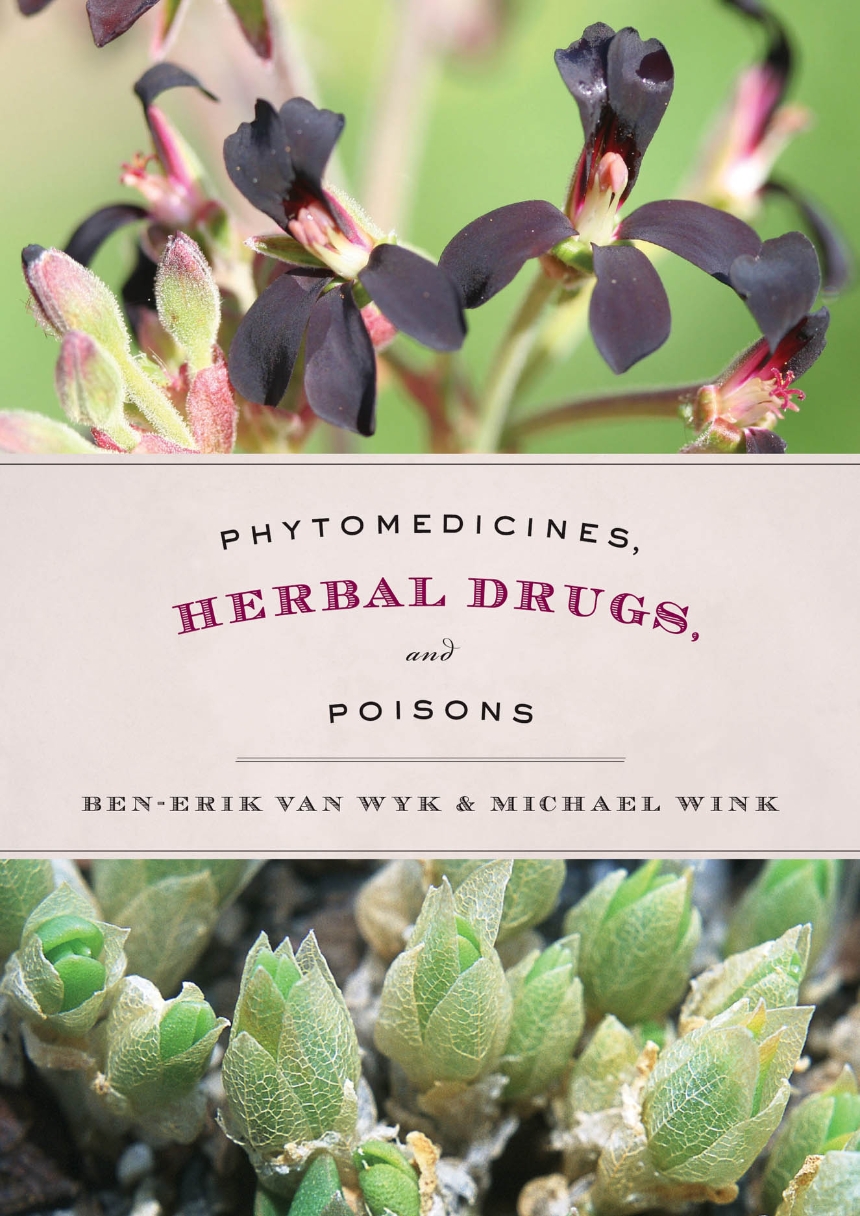Phytomedicines, Herbal Drugs, and Poisons
Plants have been used to treat disease throughout human history. On a clay slab that dates back approximately five thousand years, the Sumerians recorded medicinal recipes that made use of hundreds of plants, including poppy, henbane, and mandrake. During the Middle Ages, monks commonly grew and prescribed plants such as sage, anise, and mint in their monasteries. And as the market for herbal remedies and natural medicine grows, we continue to search the globe for plants and plant compounds to combat our various ailments.
In Phytomedicines, Herbal Drugs, and Poisons, Ben-Erik van Wyk offers a richly illustrated, scientific guide to medicinal and poisonous plants, including those used for their mind-altering effects. Van Wyk covers approximately 350 species—from Aloe vera and Ephedra sinica to Cannabis sativa and Coffea arabica—detailing their botanical, geographical, pharmacological, and toxicological data as well as the chemical structures of the active compounds in each. Readers learn, for example, that Acacia senegal, or gum acacia, is used primarily in Sudan and Ethiopia as a topical ointment to protect the skin and mucosa from bacterial and fungal infections, and that Aconitum napellus, more commonly known as aconite, is used in cough syrups but can be psychedelic when smoked or absorbed through the skin.
With 350 full-color photographs featuring the plants and some of their derivative products, Phytomedicines, Herbal Drugs, and Poisons will be an invaluable reference not only for those in the health care field but also for those growing their own medicinal herb gardens, as well as anyone who needs a quick answer to whether a plant is a panacea or a poison.
In Phytomedicines, Herbal Drugs, and Poisons, Ben-Erik van Wyk offers a richly illustrated, scientific guide to medicinal and poisonous plants, including those used for their mind-altering effects. Van Wyk covers approximately 350 species—from Aloe vera and Ephedra sinica to Cannabis sativa and Coffea arabica—detailing their botanical, geographical, pharmacological, and toxicological data as well as the chemical structures of the active compounds in each. Readers learn, for example, that Acacia senegal, or gum acacia, is used primarily in Sudan and Ethiopia as a topical ointment to protect the skin and mucosa from bacterial and fungal infections, and that Aconitum napellus, more commonly known as aconite, is used in cough syrups but can be psychedelic when smoked or absorbed through the skin.
With 350 full-color photographs featuring the plants and some of their derivative products, Phytomedicines, Herbal Drugs, and Poisons will be an invaluable reference not only for those in the health care field but also for those growing their own medicinal herb gardens, as well as anyone who needs a quick answer to whether a plant is a panacea or a poison.
See sample pages from the book (PDF format).
304 pages | 350 color plates | 6 1/4 x 9 1/4 | © 2015
Biological Sciences: Botany, Natural History
Reviews
Table of Contents
Preface
Introduction
Traditional systems of medicine
Phytomedicines
Functional foods and nutraceuticals
Plant-derived chemical compounds
Mind-altering drugs and stimulants
Plant poisons
Plant parts used
Dosage forms
Methods and routes of administration
Extraction and analysis of compounds
Quality control and safety
Efficacy of herbal medicine
Pharmacological and toxic effects
Regulation and legal aspects
Overview of secondary metabolites
Photographic index of plants
Glossary
Further reading
Acknowledgements and photo credits
Index
Introduction
Traditional systems of medicine
Phytomedicines
Functional foods and nutraceuticals
Plant-derived chemical compounds
Mind-altering drugs and stimulants
Plant poisons
Plant parts used
Dosage forms
Methods and routes of administration
Extraction and analysis of compounds
Quality control and safety
Efficacy of herbal medicine
Pharmacological and toxic effects
Regulation and legal aspects
Overview of secondary metabolites
Photographic index of plants
Glossary
Further reading
Acknowledgements and photo credits
Index
